Marketing has changed greatly over the years, from the day the first billboard was propped up in 1835 to the peak of print advertising, followed by television spots, online banners, and influencer marketing. Previously, the company with the largest ad buy that generated the broadest awareness would win the most customers. “Hey, that’s the third McDonald’s billboard I’ve seen in 10 miles… I am getting hungry, now that I think of it. Oh, look! There’s one located at the next exit.” *Cha-ching*! Customer converted.

With the rise of social media, consumer choice, and the evolution of buyer behavior, the rules have changed. The customer is now in control. This dynamic has created new opportunities and challenges for legacy brands and start-ups alike. One of those opportunities is in building a brand community around your business. In this post, I’m going to help you understand:
- What a brand community is
- Why it’s important to build a brand community
- How to build a brand community
Plus, we’ll look at brand community examples from businesses doing it really well to help inform your strategy.
What is a brand community?
Communities can develop around activities, products, food, beliefs, and careers. A brand community is a group of people with shared values who enthusiastically embrace a brand and see the company as part of their core identity. In turn, the brand embraces this group with exclusive products, discounts, experiences, and empowerment. It’s these brand community members who can provide critical feedback, keep a brand alive on a downswing, and boost it to new heights with the right strategy.

Why build a brand community?
Once viewed as a superfluous strategy, building a brand community has become an essential marketing strategy for any organization seeking to engage and grow followers, especially Gen Z. With the inundation of advertising on every platform and seemingly limitless choices to satisfy every purchasing preference, young consumers now demand more than merely providing the best product, most convenient service, or lowest price–They demand enhanced experiences and aligned values.
These demands may seem daunting, but they also provide tremendous opportunities. Best yet, the barriers of media budgets and ad spends typically available only to the largest brands are far less of a factor when it comes to building a robust and valuable brand community. It’s the brands who best listen and serve their followers who succeed in this latest stage of evolution.
So, what are the benefits of building a brand community?
A brand community creates word of mouth marketing opportunities
The community you develop can become an army of brand ambassadors. Word of mouth advertising can be a company’s most valuable asset. Studies show that 77% of consumers are more likely to purchase a new product when receiving a recommendation from friends or family.
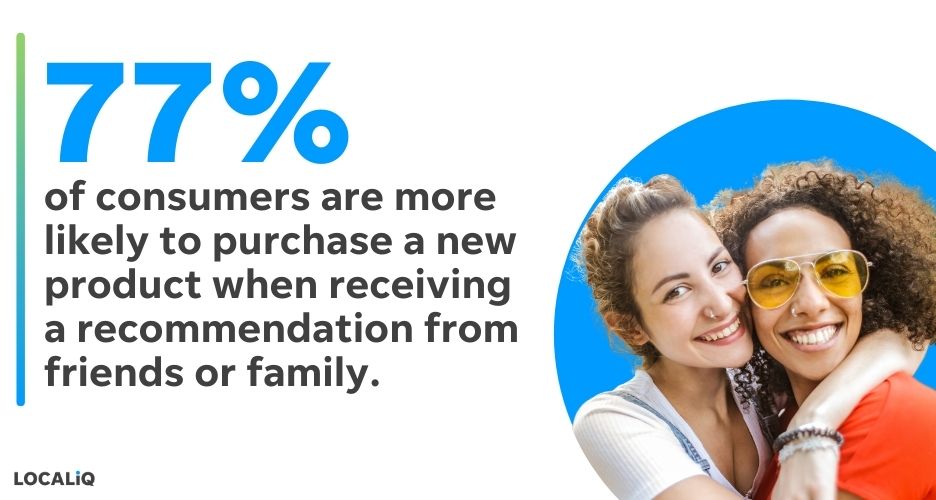
Word of mouth doesn’t just attract new customers, it helps retain them as well. The Wharton Business School found that the lifetime value of referred customers is 25% greater than non-referred.
Related: 6 Cost-Effective Customer Retention Strategies That Work for Small Businesses
A brand community gives you access to user-generated content
Additionally, these engaged customers and followers will produce user-generated content (UGC) on social media, providing additional reach without the media spend and authenticity that can rarely be bought through influencer marketing nowadays.
93% of marketers agree that consumers trust content created by customers more than that produced by brands.
If you’re asking if my brand is awesome, I’ll be the first to tell you just how great it is! But, there’s a lot more acceptance when that message comes from a trusted third party. You will likely see a higher level of engagement than what a high-paid influencer may produce. Engagement of content by micro-influencers is 7x higher than mega influencers.
A brand community helps you gather valuable customer feedback
It’s great to get people to sing your praises, but if your finger is not on the pulse of the community, and if you don’t accurately understand what they appreciate, dislike, or know what they want next, your community can quickly dwindle and be stolen by a competitor.
Providing access to a brand is something that is highly valued by consumers. Feeling heard, validated, and being empowered to affect the products and services of a company breeds loyalty and a sense of ownership. This feedback is invaluable to a brand.

Vox reported that $2.2 billion was spent on focus groups in 2017. Can’t find that in the couch cushions of your co-working space? Not to worry–merely ask your most engaged customers what they think! You will receive relevant feedback from the end-user of your product; someone who wants your brand to succeed and may have a different perspective on usage and innovation than your internal development team.
Brand community examples
Building a brand community is a proven strategy that has helped companies new and old. Since every brand community is different, there are a variety of ways that enthusiastic audiences can be built and supported to add value to a business. Let’s look at a couple of brand community examples from companies that are doing this well.
Starbucks
I worked at Starbucks from 2007 to 2011 and really enjoyed experiencing the innovative marketing of this coffee chain that took over the world. As the company grew, the iconic Siren became a symbol of community that was recognized on nearly every single street corner across the States.
While many communities form online, Starbucks curated a “third-place” for their followers–a place to spend time when away from work or home. At a time when many quick-service restaurants were focused on churning customers inside and out at record speed, coffee connoisseurs were encouraged to stay, hop on the free Wi-Fi, and maybe add a scone or a refill to their initial purchase.
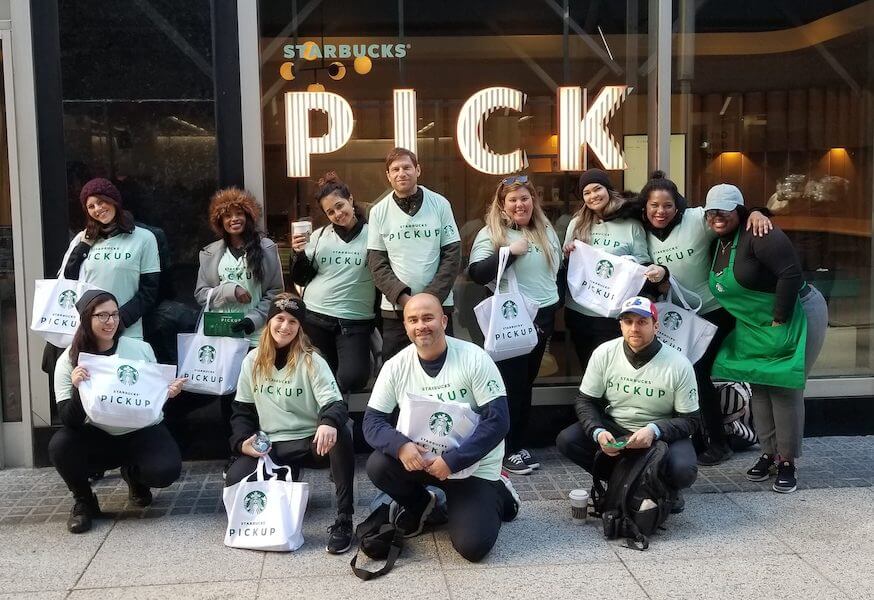
Location isn’t the only natural form of community that Starbucks developed. Language also created a culture of belonging. As a new hire, I can tell you that the most difficult part of the job was serving a customer who was far more fluent in this language than I was!
“Yes, I’d like a grande, triple-shot affogato caramel brûlée latte at 135 degrees, hold the sprinkles, and will you put extra caramel on the bottom?”
“You got it, Gladys!”
Starbucks HQ also encourages customers and partners to provide ideas on what could be done better. As an employee, I felt so empowered that the issues I encountered could be fixed. While I may have been a silent partner with my stock holding, I didn’t have to be behind the counter. My favorite suggestion that was adopted is the splash stick. A customer recommended that a plastic plug could help avoid spillage in the car, which has proved to be a welcome addition to the drive-thru experience.
Discord
Discord is another relevant brand that is synonymous with “community,” but one that has taken a completely different approach to support their followers.
If you’ve spent any time around gamers, you’ve surely heard or read “What’s your Discord?” Released in 2015, Discord was developed to provide a messaging solution for gamers that were not satisfied with the current offerings. Discord has developed a great product with a low barrier to entry, but the widespread adoption has resulted much more from the fact that the founders themselves are members of the gaming community.
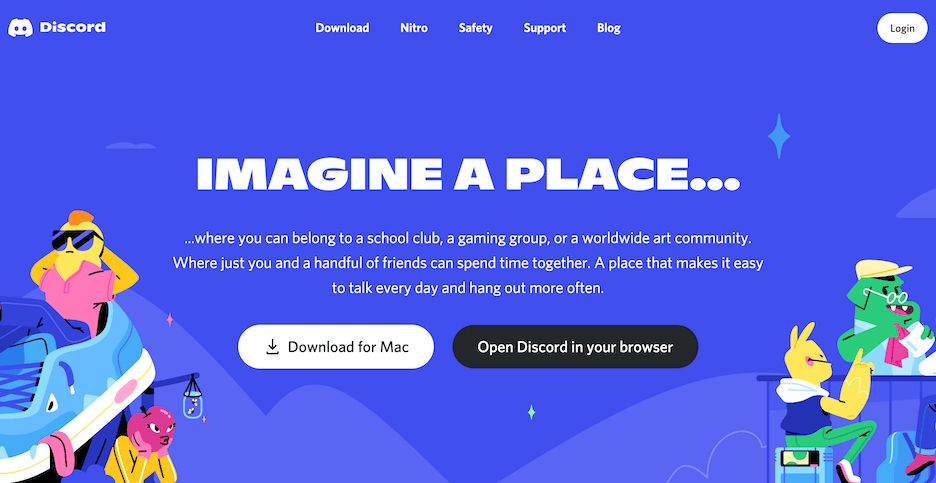
There are nods to gaming throughout the user experience of the app, which are cues many gamers recognize, but few outside the community. Similar to the aforementioned Starbucks-specific terminology, the visual experience subtly acknowledges insiders and develops a sense of ownership from the users. This sense of pride has helped the platform grow to over 150 million monthly users.
Uniquely, Discord has now leveraged this adoption not only to build its own brand community but to serve as the infrastructure for other brands to build community themselves. The seamless features supported by the reality that gamers work in virtually every industry are enabling the platform to broaden its horizon to conquer the messaging app world, beyond its core community.
How to build a brand community
These examples are inspiring, but how can you build a community for your brand–no matter the size of your business? Follow these steps and tips to build your brand community.
Develop and understand your mission
Step one is to develop and understand your mission. You cannot develop a following that lives and breathes your brand and adopts your identity as their own if it is not crystal clear what you stand for and who you serve. Here are some examples of clear, effective mission statements from leading companies:
- Tesla: “To accelerate the world’s transition to sustainable energy”
- TED: “Spread ideas”
- Southwest Airlines: “To be the world’s most loved, most efficient, and most profitable airline”
- Patagonia: “Build the best product, cause no unnecessary harm, use business to inspire and implement solutions to the environmental crisis”
- LinkedIn: “To connect the world’s professionals to make them more productive and successful”
The reverse is also true. If you do not clearly understand your brand’s identity, you cannot effectively identify existing communities with which to integrate and support.
Rebecca Longawa, esports brand strategist, CEO of Happy Warrior, and guest on The DLC DROP Podcast, shares that brands do not always need to develop their own community from scratch. An effective tactic is to identify an existing group, such as collegiate competitive gamers, and go to where they gather, online and in-person, to support their greatest passions, rather than trying to pull them to you.
“Brands are able to reach younger generations through gaming because that’s where those communities already exist,” she said.
Provide your community with what they want but can’t attain themselves, and your brand will be embraced.
Empower community
If there’s one thing I’ve learned from COVID-19, it’s that there is no substitute for in-person connections. We have all attended countless Zoom gatherings or meetings, a handful of virtual events, and downloaded more group messaging apps than needed, but we continue to crave community; live and in-person.
Providing opportunities for enhanced in-person experiences will cultivate a positive affinity for your brand and enable direct access to your customers. If you’re wondering what “enhanced in-person experiences” might be, just evaluate what your followers might organize on their own, then use your brand dollars to make that experience more meaningful–prizes, a preferred location, celebrity talent…Provide your community with what they want, but can’t attain themselves, and your brand will be embraced.

LEGO has recognized communities of builders that you can find through their website for in-person experiences like this one.
Incentivize feedback
As we’ve discussed, customer feedback is one of the most valuable aspects of supporting a brand community. The direct insights you receive and the ownership felt by the community are invaluable.
To capture this value, it’s important that you make it extremely obvious and easy to provide feedback. In newsletter communications, in-person gatherings, social media marketing, and receipts make it clear that you value customer feedback. Include a feedback button on your website’s navigational menu and share the link to that page across all channels, whenever appropriate. “Tell us what you think!”
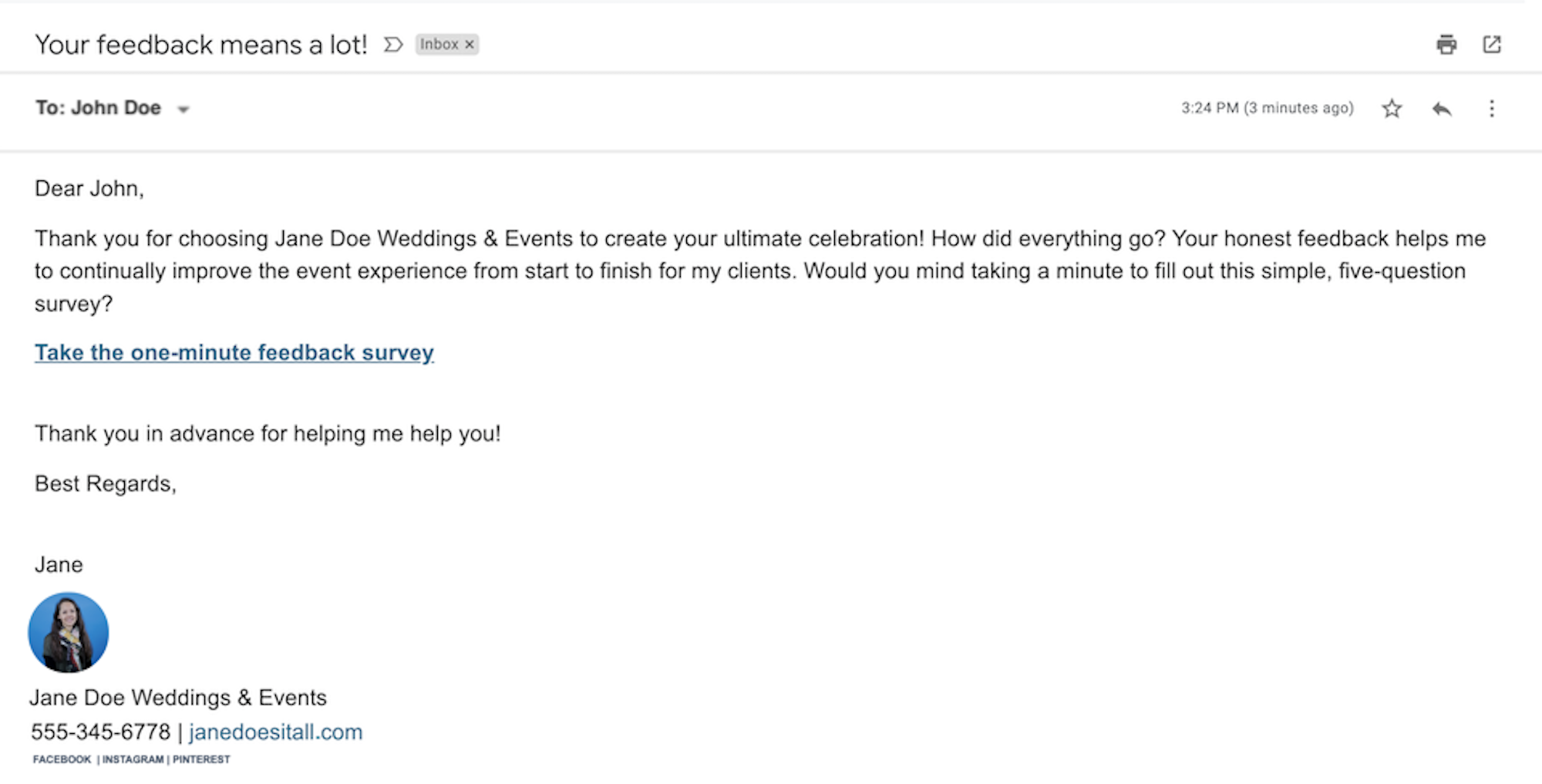
Get email templates to ask for feedback here.
Also, confirm that you are incorporating this feedback into your products and services. Recommendations are no good if you never listen to them. Follow up recommendations with an email providing a small discount around the product or service your customer referenced to show your appreciation for the input.
When a great idea is suggested, put a face to that idea and promote the person with the idea. Give the customer the credit and validation, which will result in more enthusiastic interaction and word-of-mouth advertising from your newly-famous follower and others!
Make your followers feel special
Reward your most enthusiastic followers for embracing your brand. Exclusive discounts make your strongest followers more loyal, incentivize new members to join, and enables testing of unproven products and affiliate partnership opportunities with other brands.
Related: How to Run a Customer Loyalty Program
Starbucks does a great job of this with its rewards program. When you use the app to pay for your Starbucks order, you get rewards that you can redeem in-store and online.
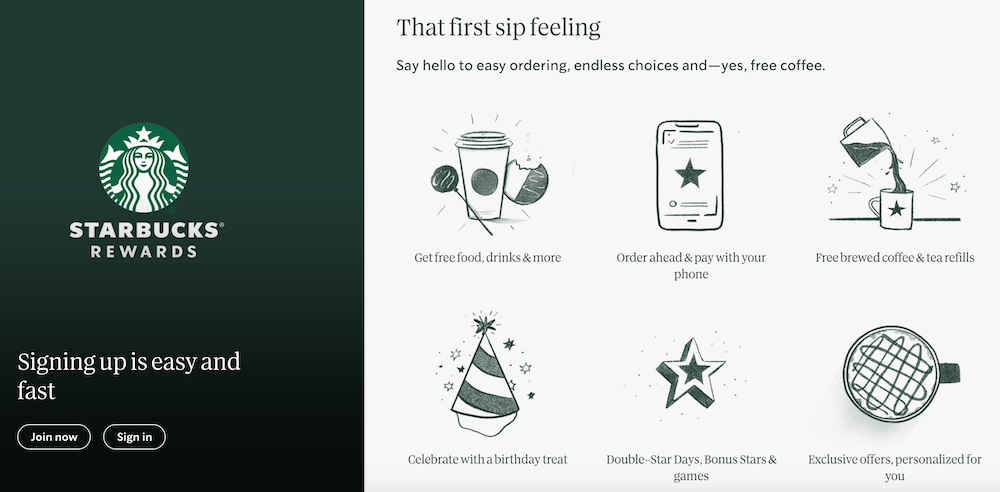
When your brand provides benefits valued by the community, the group will grow itself.
Build a brand community that benefits your customers and your business
Since the dawn of time, community has been a key component of society. It’s something that we inherently seek. There are an unlimited amount of groups of which passionate people claim allegiance. Gaming, business professionals, singles, Bible studies, age groups, ladies, men, boomers, millennials, expecting mothers, the list goes on and on and has only increased with the reach and connections provided by social media.
As brand options increase and consumer preference evolves, this natural behavior has integrated into the board rooms of brands and agencies across the globe. The competitive advantage is no longer the largest ad spend, it is empathy, listening, and executing on your community’s desires. Support your customers in ways that uniquely matter to them, and your brand will be embraced.
Want more branding resources?
- Get templates, examples, and tips to build an impactful small business brand kit
- Find out how to create a brand purpose statement
- Learn the steps to create a small business logo







